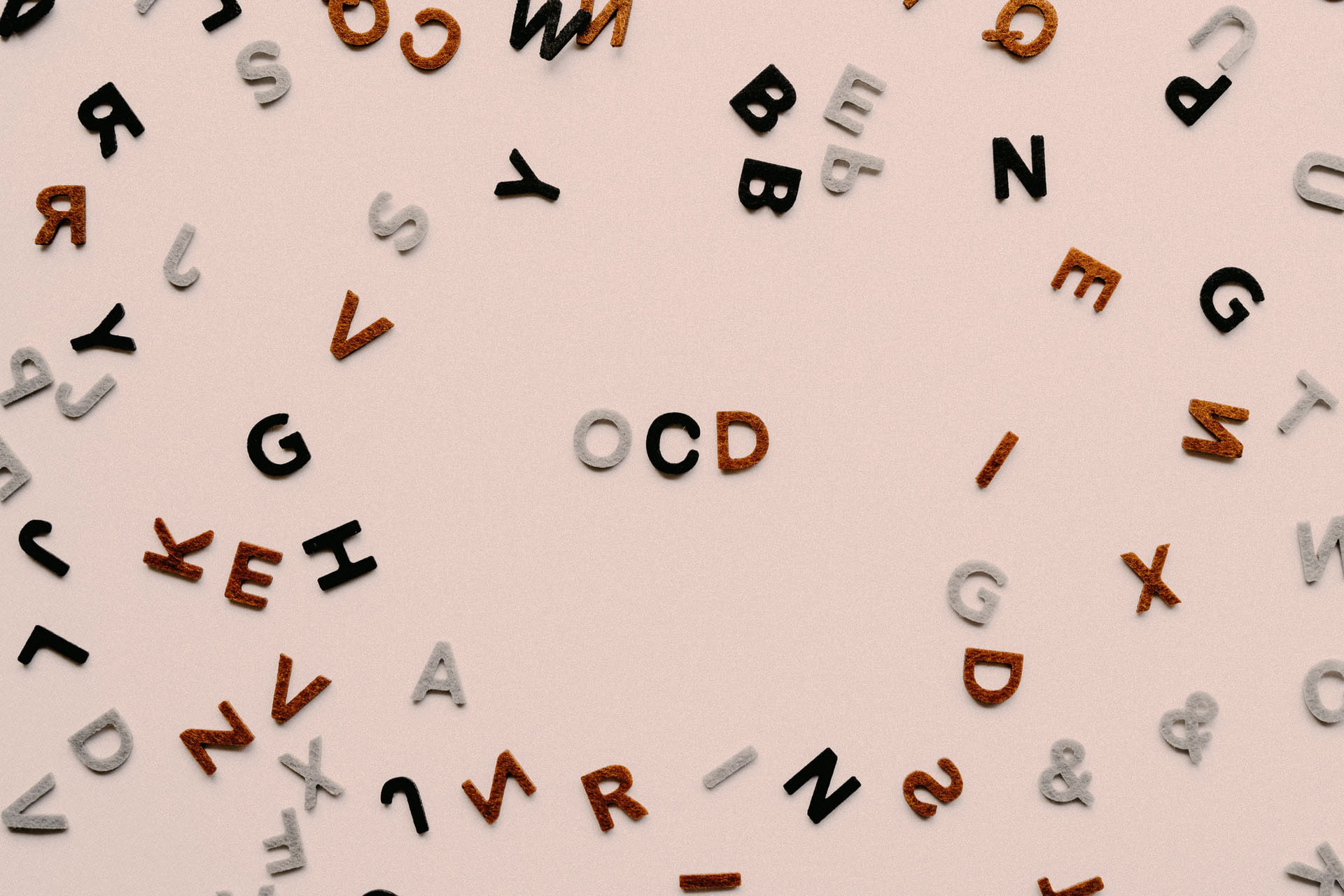What Is OCD?
Obsessive-compulsive disorder (OCD) is a chronic, common, long-lasting disorder that leads to compulsions or repetitive behaviors. It is characterized by obsessions or unreasonable fears and thoughts that result in compulsive behaviors.
A person with OCD has reoccurring, uncontrollable behaviors (compulsions) and/or thoughts (obsessions) that give them an urge to keep repeating things over and over again. It is often centered on certain matters, like the need to arrange things in a specific way or an extreme fear of germs.
Symptoms appear gradually and usually continue throughout life. Treatment may include medications, talk therapy, or both.
What Is An Anxiety Disorder?
Experiencing anxiety occasionally is normal. However, those who have an anxiety disorder have frequent excessive, intense, persistent fears and worries about everyday situations. This mental health disorder causes feelings of anxiety, fear, or worry that are so strong, they interfere with daily activities and life.
Anxiety attacks can sometimes become so severe they can peak within minutes, causing panic attacks. Feelings of anxiety that cause panic is difficult to control, can sometimes last a long time, and can actually be dangerous. People with anxiety disorder often avoid situations or places to prevent feelings of anxiety.
Symptoms may begin as early as childhood and continue into adulthood and include extreme stress, major depression, constant restlessness, excessive worrying, and intense fear. Treatment may involve medication, counseling, or both.
It’s also important to note that you can have multiple anxiety disorders, including:
- Post-traumatic stress disorder
- Obsessive-compulsive disorder
- Panic disorder
- Generalized disorders
- Social phobias, also known as social anxiety disorders
- And other specific disorders

Is OCD The Same As An Anxiety Disorder?
People with obsessive-compulsive disorder (OCD), struggle with anxiety involving intrusive thoughts that compel them toward avoidance and/or compulsive rituals. For these people, anxiety is overwhelming as they feel that not giving in to their impulses will cause something bad to happen. Although OCD falls in the category of an anxiety disorder, the two are not the same.
Differences Between OCD And Anxiety
Anxiety is basically an umbrella term for diverse anxiety-related disorders. In the US, over 40 million adults have an anxiety disorder. Anxiety is commonly diagnosed as a generalized anxiety disorder (GAD) determined by excessive and persistent worry about different things. According to the ADAA (Anxiety & Depression Association of America), this can last over six months and usually involves at least three other physical symptoms.
What Causes Anxiety Disorders?
Unfortunately, the causes of anxiety disorders are not fully known. However, researchers believe a combination of environmental, psychological, and developmental factors and genetics, are involved. Researchers are also looking into areas of the brain, specifically those that control anxiety and fear. Risks may involve the following factors:
- Traumatic experiences
- Stress resulting from an illness or another life situation involving work, finances, or family
- Drugs or alcohol
- Certain personality types are usually more prone to anxiety disorders
- Other mental health issues, like depression
- Having family members with an anxiety disorder
What Causes OCD?
According to research, OCD involves problems with communication that run between the front and deeper brain structures. These brain structures are basically chemical messengers that use a neurotransmitter to produce serotonin. Some brain images have shown that brain circuits of some people with OCD normalize with cognitive behavior therapy or medication that elevates serotonin levels.
Symptoms of Anxiety and OCD
Anxiety symptoms include:
- Feeling irritable, nervous, or on edge
- Breathing rapidly, trembling, or hyperventilating
- An increased heart rate
- Experiencing gastrointestinal problems
On the other hand, OCD is a condition in which a person experiences obsessive urges, impulses, or unwanted thoughts, leading to compulsive actions to lower the distress involved with these thoughts.
Symptoms of OCD are:
- Unwanted persistent thoughts, urges, or images
- Time spent every day preventing or avoiding thoughts, urges, or images
- Trying to control unwanted thoughts with rituals
While both disorders involve distressing thoughts, the key difference between anxiety disorder and OCD is that OCD involves obsessive thoughts that result in compulsive actions. In contrast, a person with general anxiety experiences worries but may not necessarily take compulsive actions. In addition, GAD is characterized by physical anxiety symptoms, such as hyperventilation, while such physical symptoms are not required for OCD.
Is it possible to have both GAD and OCD? Yes, and it is important to note that one disorder doesn’t require the other, meaning you don’t necessarily have anxiety with OCD. Compulsions may be motivated by another emotion that is equally intense, such as shame, guilt, or disgust, rather than anxiety.
How Anxiety And OCD Are Treated
OCD was historically characterized as an anxiety disorder due to the intense anxiety associated with unwanted and persistent thoughts, urges, and images. But because of the significant differences in brain function and chemistry of these disorders, in 2013, they were reclassified as a separate diagnosis by the American Psychiatric Association. Still, there are some similarities in GAD and OCD treatments, but they may also differ.

With GAD, a person has physical anxiety symptoms, such as hyperventilation, where with OCD, there may not be any physical symptoms. However, both conditions can be treated with cognitive behavior therapy (CBT). CBT is the umbrella term that describes evidence-based therapy types, with the idea that how a person feels and behaves is influenced, in part, by their thoughts.
Anxiety disorders like GAD are basically treated with both CBT and medication. Exposure and response prevention (ERP) treatment therapy is the standard OCD treatment, which is a type of CBT. ERP focuses specifically on targeting the compulsions and obsessions a patient experiences.
Treatment involves a therapist working with the patient to slowly expose them to their obsession source without allowing them to perform a compulsive action. With ERP therapy, the whole idea is to get the patient to realize they don’t need to give in to their obsessive thoughts with compulsions. Rather, they can handle their thought discomforts and learn to overcome their OCD.
How GAD And OCD Treatments Differ
One way anxiety treatment and OCD treatment differ is when a patient seeks reassurance for a compulsion. Seeking reassurance may be a person’s compulsion meant to solve or soothe obsessive thoughts. The goal of ERP treatment is to avoid reassurance altogether and manage the resulting discomfort.
However, treating GAD may be helpful to examine the evidence, challenge the person’s thoughts, or get feedback on specific anxieties. For OCD, effective treatment can lead to better management of anxiety and depression symptoms, usually attributed to people being capable of dismissing stressful intrusive thoughts from OCD that cause their anxiety more easily.
Get Help With OCD Or Anxiety Disorders
If you or a loved one struggles with an anxiety disorder or OCD, contact Acera Health. We offer both outpatient and residential care for those with these types of disorders. Our proven treatments are specifically tailored to each patient’s unique needs and promote well-being to help guide you through your journey towards recovery.









